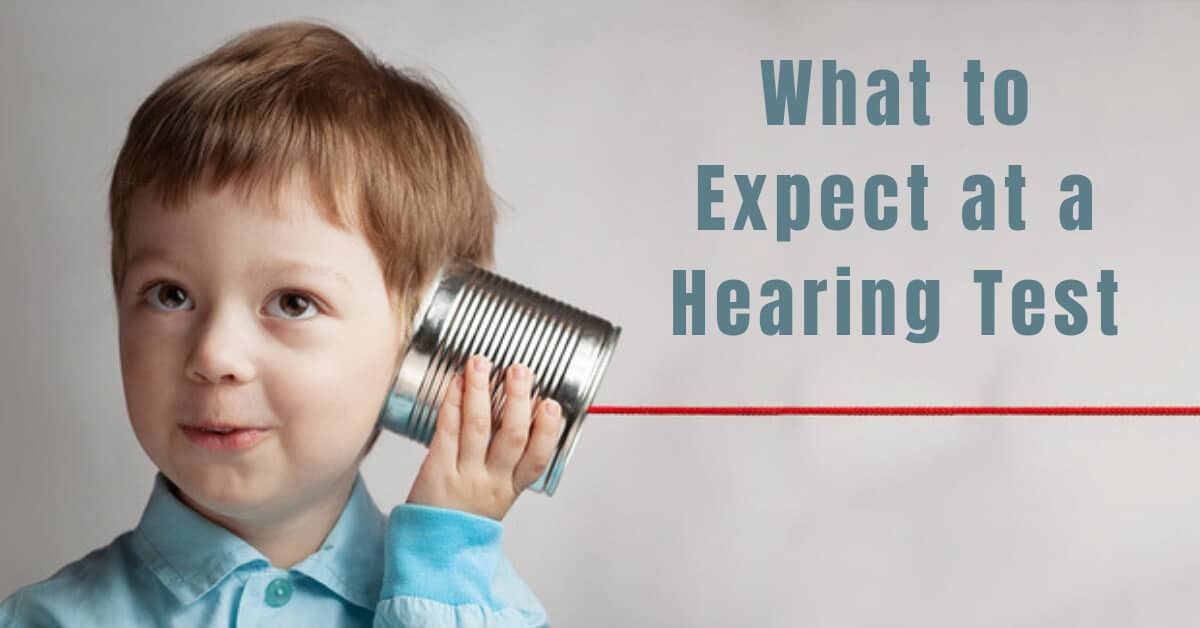Congratulations on setting up your first hearing test! A hearing test is the best tool for analyzing the capabilities of your hearing and detecting any hearing loss. Modern hearing tests use multiple factors to check your hearing for issues and to help find effective treatment for any problems or concerns. Hearing tests are painless, comprehensive and non-invasive – getting an annual hearing exam is a great idea for tracking your hearing health and catching any hearing issues early. Let’s take a look at what you can expect at your hearing test.
Review Your Hearing History
The first part of a hearing evaluation involves recording your medical history as it relates to your hearing. Your hearing specialist will ask you about your noise exposure at work and at home, as well as any existing or recent changes you’ve noticed to the way you hear. They may ask you about medications you have taken or currently use -some drugs are ototoxic, meaning that they can have the undesirable side effect of causing hearing damage. Some physical injuries, especially those that involve the head and neck may have consequences for your hearing, and your hearing specialist will ask you if you have any history of impact injuries.
Your hearing health history may also involve discussing the role your hearing plays in your life. If you are experiencing hearing problems, you and your specialist may discuss some of the ways hearing difficulties are changing your lifestyle and health. Understanding your lifestyle is one way that audiologists and hearing specialists help connect you with the hearing solution that is the best fit for your specific needs.
Physical Exam
Next, your hearing specialist is going to physically examine your ears looking for signs of infection, obstruction or other issues that can be visibly detected. Impacted earwax is a common issue for many people that can make hearing increasingly difficult if it is not addressed. Your specialist will use a small handheld medical tool called an otoscope to look inside your ear canal. The otoscope has a cone-like shape. It lights and magnifies the ear canal so any physical issues become visible.
Tone Testing
The third component of a hearing test is going to map the way you hear. It involves concentrated listening either in a soundproofed room or using headphones in a quiet testing space. During testing you will be asked to respond to tones when you hear them. For pure tone tests, short tone sounds will be played at different frequencies and volumes. With headphones on, you will be asked to indicate not only when you hear a sound but which ear you heard it from.
Pure tone tests mark when you respond to a tone played. Tones will be played at soft volumes and high and low frequencies that may be difficult or impossible for you to hear. Through charting what sounds you are able to respond to, a tone test can discover what frequencies and at what volumes hearing becomes challenging for you.
Speech Testing
Some hearing tests may also involve a component that evaluates your ability to recognize speech. Again, the test simply involves responding to what you hear. For speech testing, simple sentences will be played for you and you will be asked to repeat what has been said. The speech test will also test the frequencies and volumes you have difficulty with, as well as observing your ability to use your hearing for its most common and complex function – understanding spoken words.
Reviewing the Results
You won’t need to wait weeks for the results of your hearing test – they will be immediately available for you and you will review them with your hearing specialist. Tone testing generates an audiogram, which charts the hearing in each ear. Audiograms chart the softest sounds in varying frequencies that you can hear.
Hearing loss is measured in decibels of hearing threshold level, demarcated as “dB HL”. This measurement plots the decibel level above normal hearing that you need to correctly detect a sound. For instance, if you have trouble hearing high frequency sounds you may need them to be 30-40 decibels louder than the softest sound normal hearing can detect.
If you have hearing loss, it is understood in terms of dB HL. Normal hearing is in the range of 0-25 dB HL. From 26-40 dB HL hearing loss is considered mild. For people experiencing gradual hearing loss, the stage of mild hearing loss is the best, most effective time to begin treating hearing issues. The next stage of hearing loss rests in the range of 41-70 dB HL and is deemed moderate hearing loss. Severe hearing loss occurs in the range of 71-90 dB HL and profound hearing loss is considered any hearing issue above 90 dB HL.
Finding Solutions
While hearing loss can’t be reversed, it can be managed effectively and Advanced Hearing Solutions can help. If your hearing test finds permanent hearing loss, we can help you connect with the best hearing aid or assistive device for your needs, programmed specifically for your hearing challenges. Time for your next hearing exam? Contact Advanced Hearing Solutions today!

